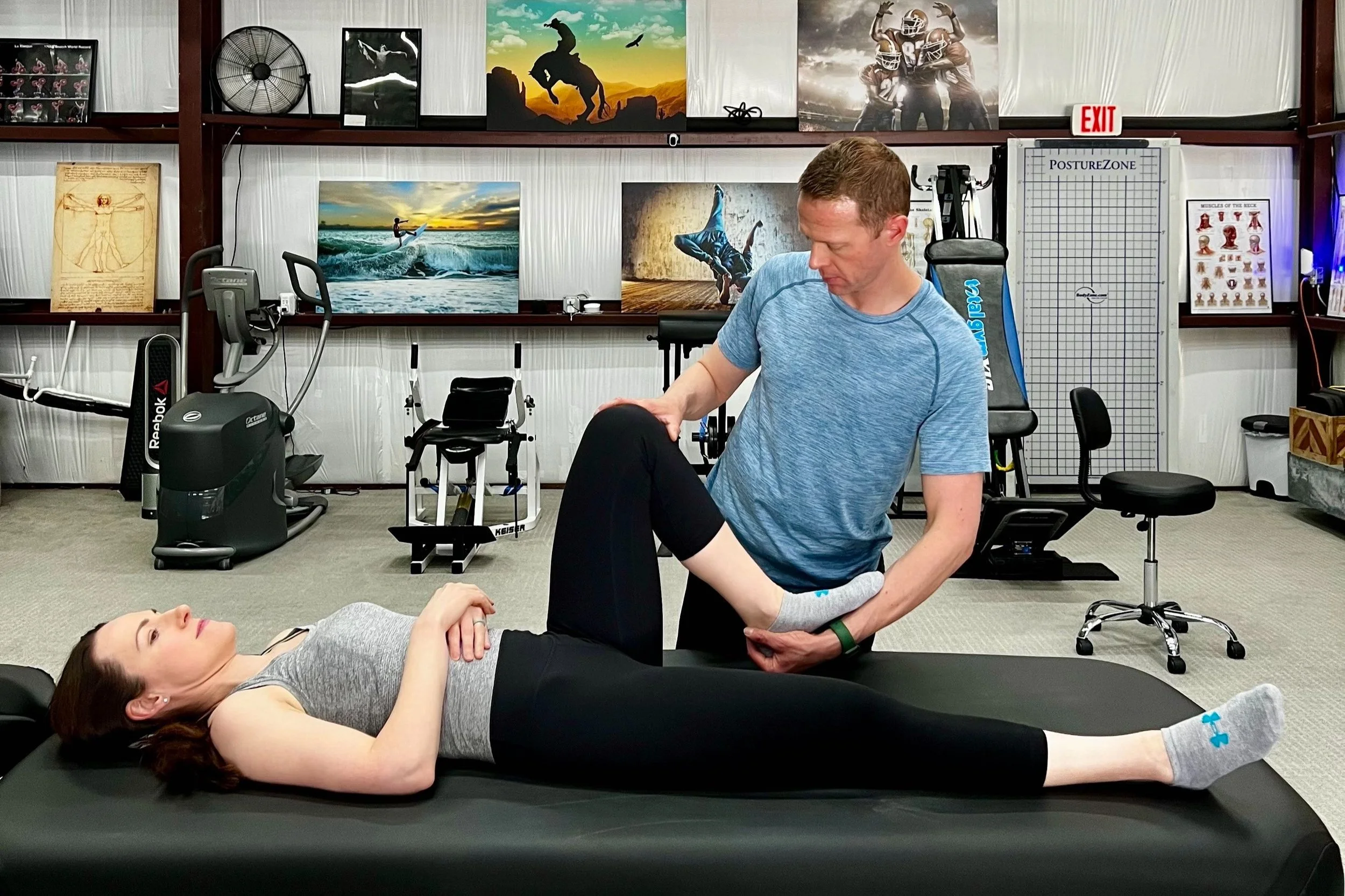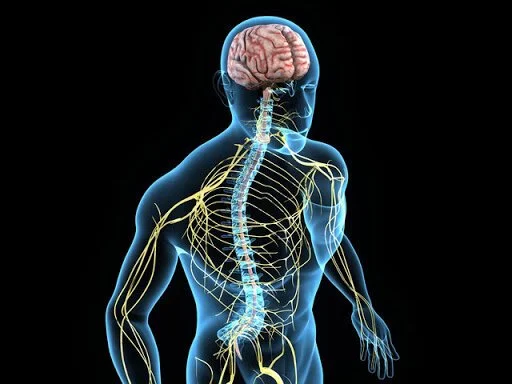
Approach to Muscle Treatment
Science of Pain
The truth about pain is that we know so little about it that the definition can really be boiled down to:
This is why you cannot describe it, put it into words, or give it a number.
All you know is that, you don’t like it.
The only thing that we can infer is that pain is an alarm bell to some problem that is going on in your system at large.
Sensations you don’t like.
Let us help.
Identify problems. Restore function. Eliminate pain.
Structure vs. Function
Inside the scope of the neuromuscular system, there are many possible problems that can cause pain. Damage to your structures will certainly set off alarms; tear a muscle or break a bone, and you will know it. However, if your materials are intact, what else could be driving your muscle pain?
Well, it turns out that problems in your functional systems can set off all sorts of alarm bells. These are trickier to locate but can wreak just as much havoc on your life.
Solve the Right Problem
You need to apply the appropriate solution to the problem at hand.
Material problems need material solutions.
Functional problems need functional solutions.
If you opt for a material intervention to solve a functional problem, or vice versa, you will not achieve a successful outcome as related to getting past your pain. You must use the right tool for the job.
Know Where to Look
Consider the example of a smoke alarm: just because a smoke alarm is going off in one room, it does not mean that the fire is coming from that room. All you know is that there is a problem somewhere that needs your attention now.
It is the same when evaluating the functional drivers of musculoskeletal pain. You may experience sensations at the area of dysfunction or it may be at an area away from the primary dysfunction. The sensation itself is misleading.
You need to have a qualified kinesiologist to consider a mix of objective and subjective data to identify the relevant problems and thence restore function to the areas needed for a successful outcome.
You need a guide if you are to get to the other side of your dysfunction and pain.
MECHANICS
We are designed to function on this planet. Our system is governed by the same laws of Newtonian Physics as any other mechanical system. Our movement machines must generate, transfer and absorb forces as they interact with gravity.
Link to pain: When your system cannot create sufficient force to meet an imposed demand those forces spill over into other areas and alter movement mechanics, which in term disrupt the sensory system.
MOTOR CONTROL
We interact with forces actively through muscle contraction, which is a living process that must be directed, controlled & coordinated across the entire system. We execute this beautifully through the complex network of neurons that run from the brain to the muscles.
Link to pain: Insufficient control over muscle contraction and coordination across the system results is a cascade of compensations that contribute to overall movement restriction that alters sensory information.
Linking Function & Pain
“So glad I found Scott. He is extremely knowledgeable and scientific in his approach to treatment which is very refreshing. Recommend him 100%.”
— Eric Shultz
What We Do
We assess the unique features of your system to locate the problems driving your individual muscle pains.
Data Science
Our one-of-a-kind data platform allows us to pinpoint the areas in which you are exhibiting low quality muscle contraction.
Targeted Solutions
We target corrective-exercise interventions into the specific areas identified for maximum effectiveness without wasting time & energy over guesswork.
Proven Results
Our approach has been proven over thousands of sessions to create successful outcomes represented by an increase in stability, mobility & muscle performance with a concurrent decrease in pain & restriction.
Kinesiology is the field of study dedicated to human movement.
Applied kinesiology is a sub-specialty dedicated to applying scientific rigor to human movement problems in the real world.
Why Kinesiology?
A Kinesiologist is trained specifically to root out the causes of movement restrictions, restore function and to solve health challenges related to the muscle system
A Data-Driven Approach to Muscle Health
Data is the key to unlock successful outcomes for both of us.
Good observation & anaysis means that we never guess or make assumptions. We do not waste time going down the wrong path. We test, retest and always validate.
The goal of each session is to locate a key functional deficit in your system and to restore control, which has been shown to influence a concurrent change in the sensory system.
The degree to which this will occur each sessions will vary from session to session. However, we keep the needle moving forward with data and set you up for sustainable progress over time.
More Personalized
Just because we are talking about “data” does not mean that you are in a lab connected to wires. We operate in the real world and in a real training setting.
Furthermore, all sessions are one-on-one and without distraction.
It is just you & your kinesiologist. All attention is on your case.
We offer a uniquely adaptive & individualized experience that allows you to make your personal progress truly personal.
How To Think About Each Session
DATA COLLECTION
At beginning of every session, you’ll report any updates on the sensations & symptoms that you have experienced throughout the week.
Then, taking into account what you have reported, we will use a variety of established & validated metrics to collect reliable information about the integrity of your system in real time.
MECHANICAL ANALYSIS
Using our proprietary system, we can analysis the data to determine how and where your muscle system is lacking control.
We then identify the most receptive area to make an initial intervention for the day.
We need to collect quality data to a conduct a reliable analysis, which in turn allows for an accurate intervention.
RESTORATION OF CONTROL
In order to restore muscle control, we stimulate “motor learning” at the relevant areas with directed resistance. We manually control the whole process for you so that you are not left guessing whether you are “doing it correctly” or not. Manual forces can also be dynamically adapted moment by moment to optimize tissue stress & your system’s response during each individual rep.
The result is a stimulus that produces rapid learning for increased muscle contraction force, joint stability & muscle system coordination/control within minutes, not months.
VALIDATION & PROGRESSION
After each intervention, we follow up with a retest to confirm that a change has taken place, as well as to re-inform our data set for the next intervention.
Furthermore, we will validate the session work again at the beginning of the next session to confirm that the system is “holding the change” and that we are “on the right track.”
Dealing with Restriction & Pain
Research has shown that motor re-training can correct mechanical and motor control deficiencies for positive health outcomes:
✔ Relieve Tightness, Pain & Restriction
✔ Increase Neurologic Function
✔ Decrease Stress Load
✔ Improve Sleep & Decrease Fatigue
✔ Boost Immune Function
✔ Improve Breathing & Oxygen Uptake
✔ Promote Digestive Health
✔ Buffer Metabolic & Auto-Immune Conditions
✔ Enhance Recovery from Concussion & TBI
✔ Improve Learning, Speech & Communication










